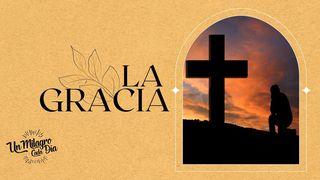Jesus In All Of LeviticusMuestra

What’s Happening?
Leviticus picks up right where Exodus left off.
In the book just before this one, God had made a covenant with Israel after freeing them from Egypt. He would be their God and they would be his people. That means God would actually live with them.
But where would God live? Exodus told us about the construction of a tent of meeting or tabernacle, complete with different rooms, altars, and tools. This is where God would live. Specifically, he would live in the innermost room of this tent called the Holy of Holies.
So at the end of Exodus, after the tent is completed, God comes into the tent and fills it with his glory. But no one can enter in. No one can come into God’s presence. It’s too glorious, too powerful, too much. Something has to be done to allow people to enter into God’s presence.
So the question now is not, “Where will God live?” but, “How can we live with God?”
That is the question Leviticus will answer for us.
The Offerings
The answer is atonement. Atonement has a range of meaning, but can basically mean either wiping clean or paying a ransom price. Surely both apply here. In order for sinful people to come into God’s presence, they need to be cleaned up and their sin needs to be paid for. But how? The answer is offerings.
The first section of Leviticus is kind of like a table of contents. It shows us all the different types of offerings, or sacrifices. These will then get picked up through the rest of the book. But we learn what they are here in this section.
The first three we read about are the burnt offering, the grain offering, and the peace offering.
In a burnt offering, also known as a whole offering, the worshipper brings a whole animal which is sacrificed. All its pieces, including the meat, is burned up. None of it is left - that’s why it’s called a whole offering.
In a grain offering, the worshipper brings a portion of the first harvest from their farm. They can bake it into bread, fry it into bread, or just bring the whole raw grain. A small portion of the gift is burned up, but the rest is given to the priest to eat. One of the purposes of this gift is to recognize God as the owner of their farm. When they see the priests eating their grain, it is a picture of God accepting their gift and graciously granting them the remainder of their harvest.
Finally, we see the peace offering. This offering is known by many names such as fellowship offering, communion sacrifice, or offering of well being. It has so many names because there is so much meaning packed into it. What’s most significant about this gift of an animal, is that most of it is given back to the worshipper to eat with their family in God’s presence.
Many believe that these three offerings would be performed one after another by a single family. If that’s true, it gives us a beautiful picture of the whole system of tabernacle worship described in Leviticus.
The family would present a whole offering to wipe them clean of sin’s guilt and pay the ransom price on their heads for breaking God’s law. Then, they would offer a grain offering, thanking God for providing them with their harvest and providing food for the priests who go between themselves and God. Finally, they would offer up the peace offering, where they would eat a banquet of meat in the presence of God.
This final meal is the beauty of Leviticus. Humans sitting down to a meal with God.
Where is Jesus?
This is our story too. In order for us to be in God’s presence and be his people, Jesus fulfilled every aspect of this system of sacrifice.
Jesus’ Offering
Jesus is the true whole offering who gave himself completely for us on the cross to earn our atonement.
Jesus is the final grain offering. When Jesus provided the final sacrifice of his own body, he didn’t offer up the first fruits of some farm, but the first fruits of heaven. He gave the best the universe had - his very self. And as the grain offering provided food for the priests, Jesus’ sacrifice is what sustains all believers as his new priests to the world.
Finally, Jesus is also the fulfillment of the peace offering. We get to sit down to a communal meal with God and other believers now in the Lord’s Supper. Furthermore, when Jesus returns we will sit down to a final meal with him physically present at the table at the marriage supper of the lamb.
Jesus is the whole offering that makes atonement, the grain offering that sustains us, and the peace offering by which we commune with God.
See for Yourself
I pray that the Holy Spirit would give you eyes to see the God who longs to live with us and provides us a way to live with him. And that you would see Jesus as the ultimate whole, grain, and peace offerings, who freely gave himself to bring us into his glorious presence.
Escritura
Acerca de este Plan

How can we live in God’s presence? We find the answer in the book of Leviticus. If we are ever to dwell with God, we must become like God; we must be holy as he is holy. That is why Jesus took on our sins to make us holy like him. This plan will show you Jesus in every passage of Leviticus to more clearly see this beautiful truth.
More
Planes relacionados

ABC De La Biblia Para Principiantes

1 Tesalonicenses: Modelos a imitar

¡Levántate! 7 Claves Para Levantarte Y Seguir.

La Gracia. 7 Claves Para Vivir en Plenitud.

Que El Mundo Crea
Marcas De Un Discípulo

Testigos Del Milagro: La Primera Navidad

Confiando en Los Propósitos De Dios
